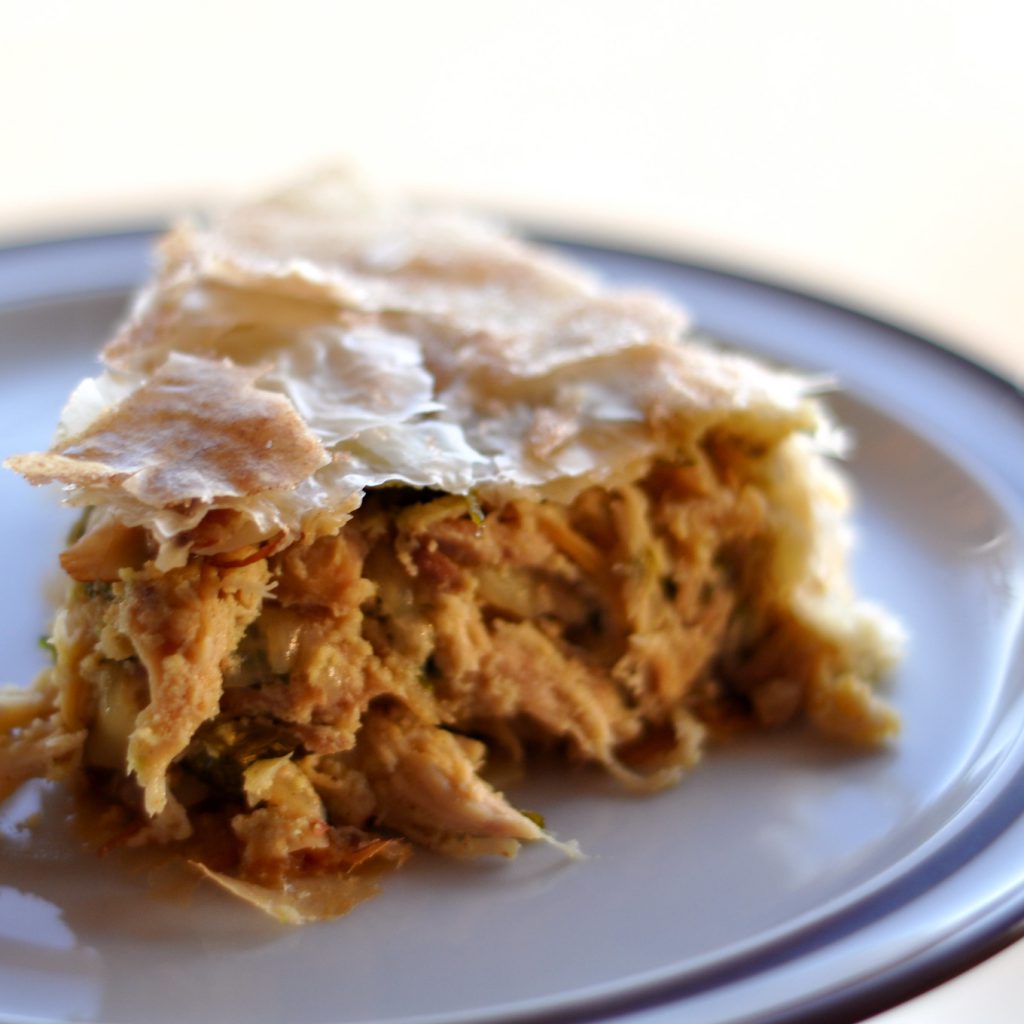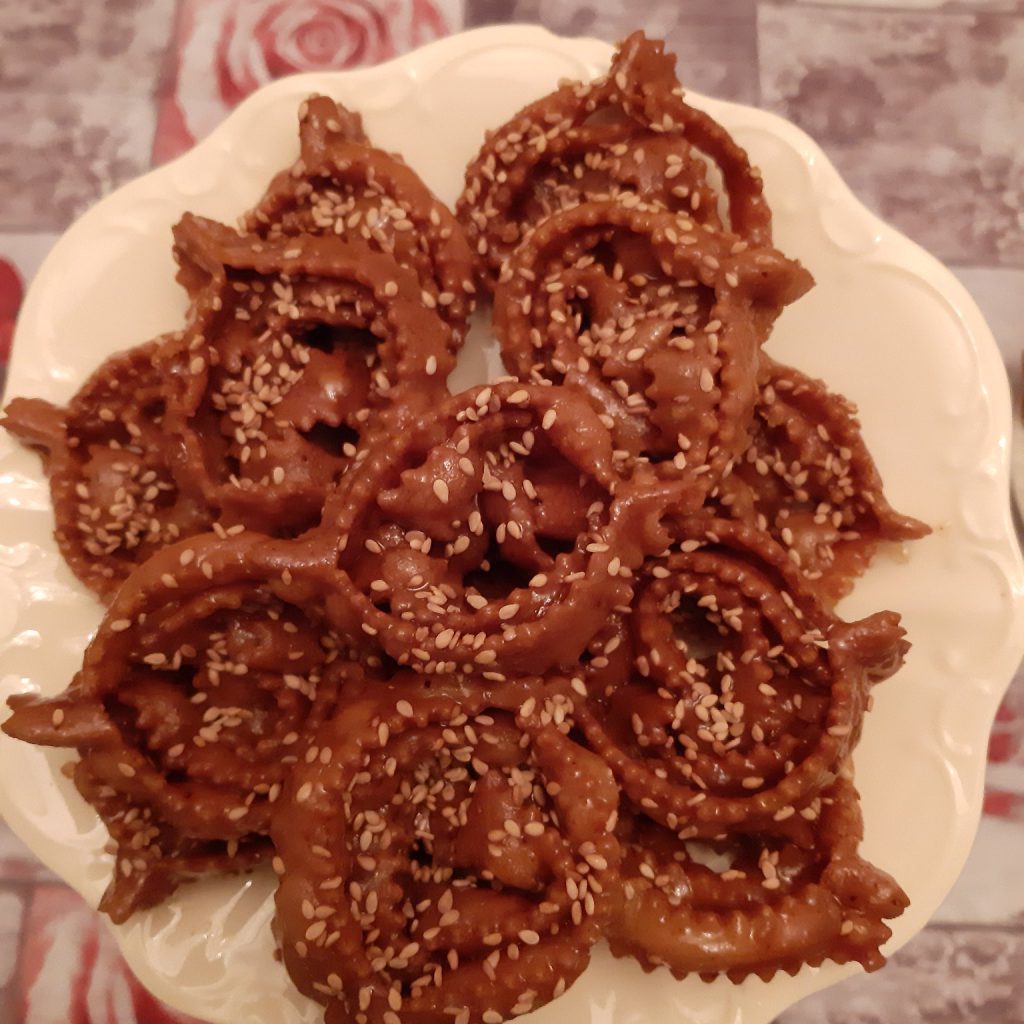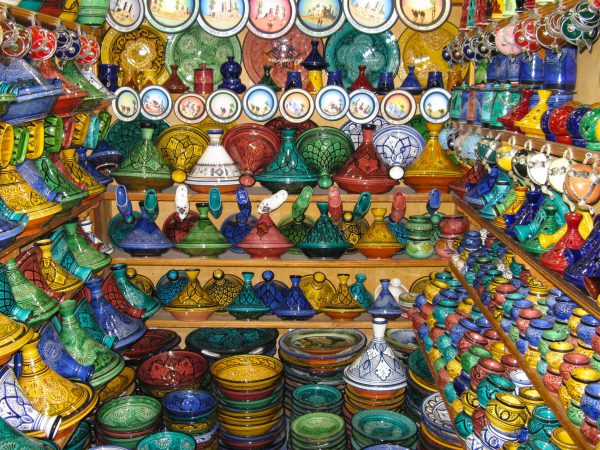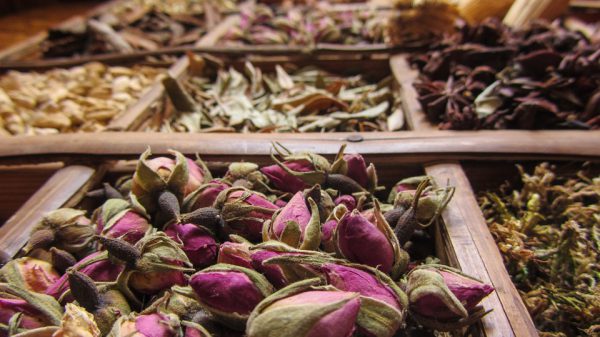Last Updated on July 25, 2022
Morocco, a colorful and exciting North African country, offers travelers a rich historical heritage, exotic bazaars, unique architecture, and natural wonders alongside wonderful cuisine. Inspired by many cultures, such as the Middle Eastern, African, French, Andalusian, and Berber, Moroccan cuisine is a reflection of multicultural geography.
One of the most well-known cities in Morocco is Fez, the country’s former capital city. This city’s cultural diversity shows itself in all of its dishes, characterized by abundance and simplicity at the same time.
You’ll notice the use of many spices, the combination of sweet and salty flavors, and the elaborate decorations with fruits, nuts, and legumes. These dishes are mostly prepared traditionally, and every one of them is full of aromatic surprises. Cheer up! Your palate will thank you.
Moroccan Cuisine
Morocco’s turbulent history has brought people from different cultures with their rich cooking traditions to the country.
First, there were the Berbers of Morocco, descendants of the prehistoric Caspians of North Africa. Even though the Berbers were eventually converted to Islam, they resisted the Arabs and maintained their culture for a very long time. Their culinary influence is best seen in the simple Moroccan dishes based on semolina, wheat, and fresh vegetables.
Next, we have the Arabs who started to arrive in Fez in the 9th century. Once they settled in the country, they contributed to Moroccan fusion cuisine with new spices, such as ginger and saffron, new meat cooking methods, and recipes that include honey, almonds, and pistachios.
In the following centuries, the Moroccan cuisine would be enriched by the Jewish community that migrated to the country from Spain. They brought some refined dishes, mostly based on meat and fish and mixtures of sweet and salty pastries.
Finally, there’s the Turkish influence brought by the Algerians in the 16th century. That’s where all the grilled meats and skewers come from.
The Best Dishes in Fez
As you can see, Moroccan culture is a mosaic of very different cultures from all over the world. Fez itself is never short of surprises if you dare to experiment. Here are the dishes you shouldn’t miss out on when you’re visiting Fez.
Harira
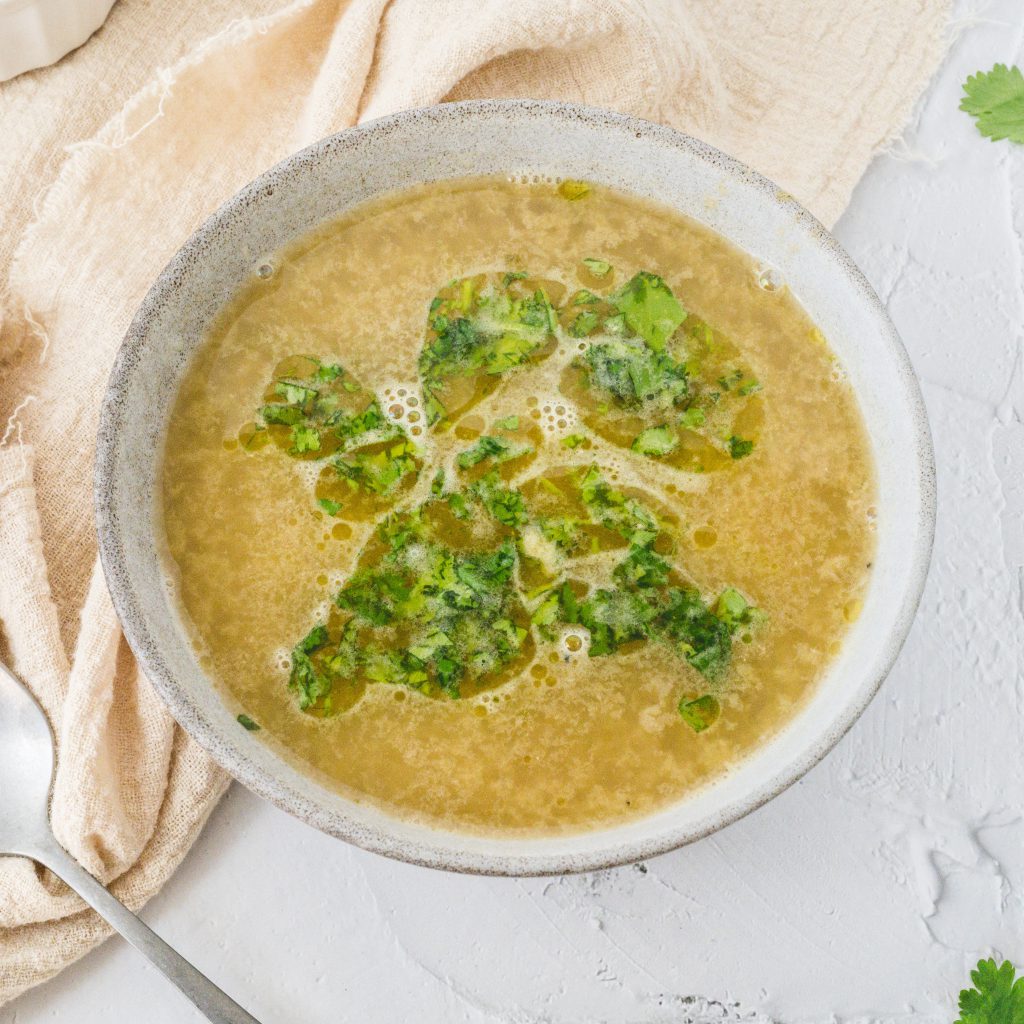
One of the delicacies you will encounter frequently in Fez is the traditional harira soup. It’s typically made from chickpeas and meat, usually veal or lamb, coriander, noodles, parsley, ginger, carrot, tomato, and flour.
There are many different versions of this soup, but in general, it’s a very thick and hearty dish, usually accompanied by dates and some typical sweets called chebakia.
The harira soup is also a spiritually important dish for Moroccans, as they break their fasting with harira during Ramadan. It’s one of those local dishes that amaze you with their taste and fill you up warmly.
Couscous
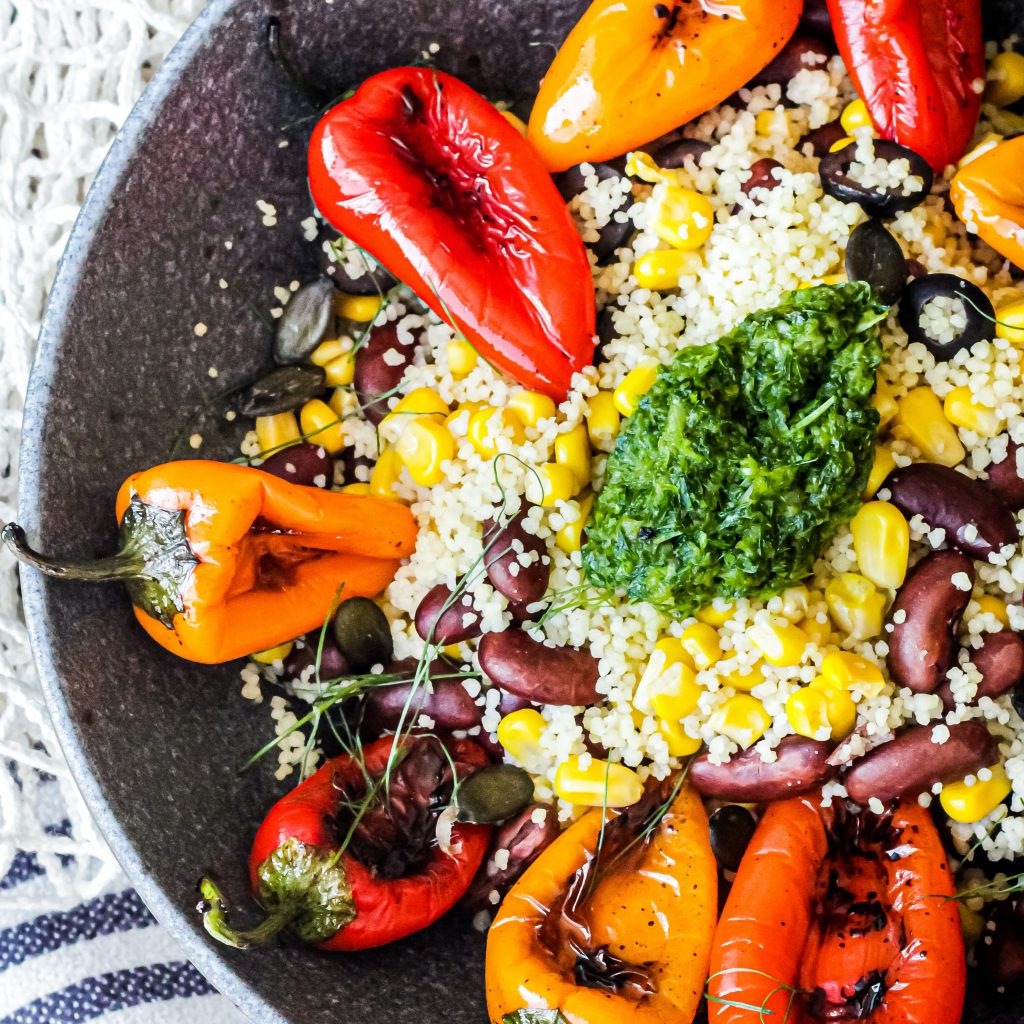
It’s said that the Berber nomads invented couscous because it was quick to cook and easy to carry. The main ingredient of this dish is wheat semolina and it’s typically paired up with other savory items like vegetables, chickpeas, beef, chicken, lamb, or fish.
It’s a dish full of exotic spices, pine nuts, and sultanas. Couscous is so flavor-infused that it can change the way you look at carbohydrate-based dishes. And if you want to add this recipe to your cookbook, check out this cooking class on traditional couscous with a local souk tour.
Tagine
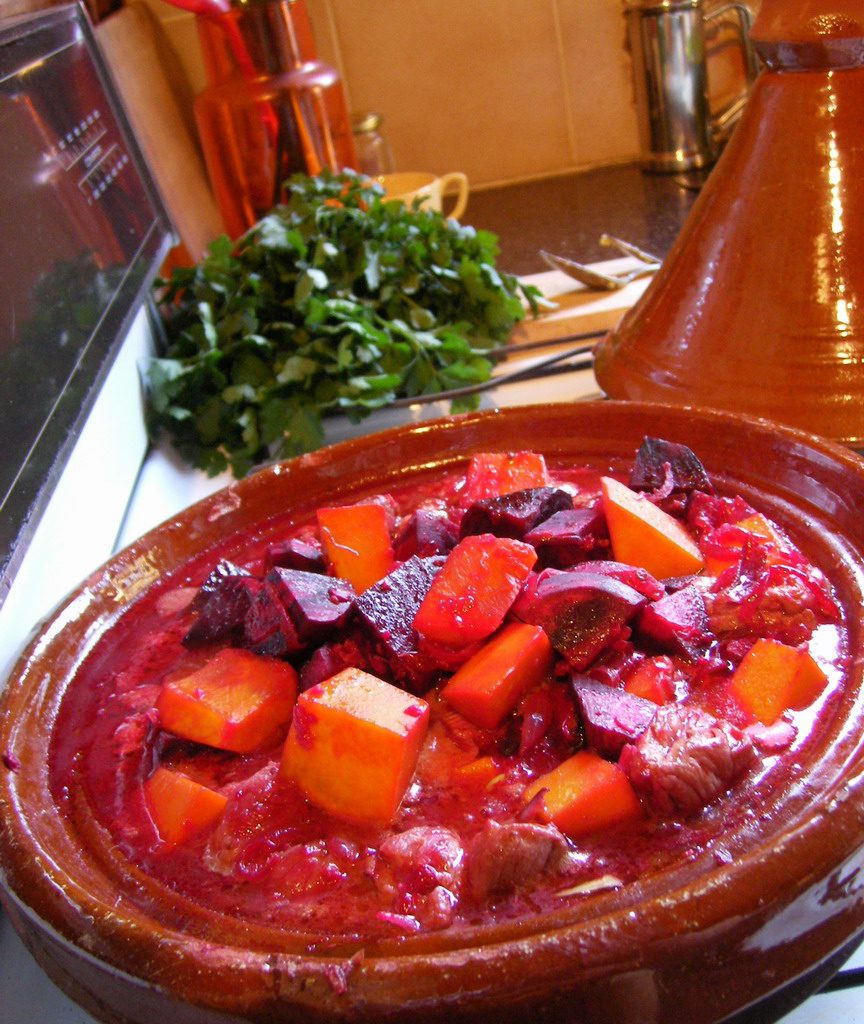
Tagine is one of the first dishes you might think of when talking about Moroccan food. It’s a kind of stew cooked over low heat in a pot of baked clay. The dish owes its name to this container, which has a conical shape that condenses the evaporated water back into the pot, and prevents food from drying out in the cooking process.
The tagine can be made with beef, chicken, lamb, or fish. The meat is cooked very slowly in a broth infused with spices, such as coriander, turmeric, cumin, paprika, ginger, and various vegetables, such as potatoes, carrots, and aubergines. Depending on the recipe, you can find dates, almonds, olives, or plums in a tagine pot, to which Moroccans usually add a splash of lemon.
Adorned with colorful patterns, tagine pots are also one of the most important symbols of Moroccan cuisine. If you’d like to experience cooking with a tagine firsthand in Morocco, check out this Private Moroccan Cooking Workshop with a souk visit. For vegans, there’s also a Vegan Moroccan Tagine cooking class with a souk tour.
B’ssara
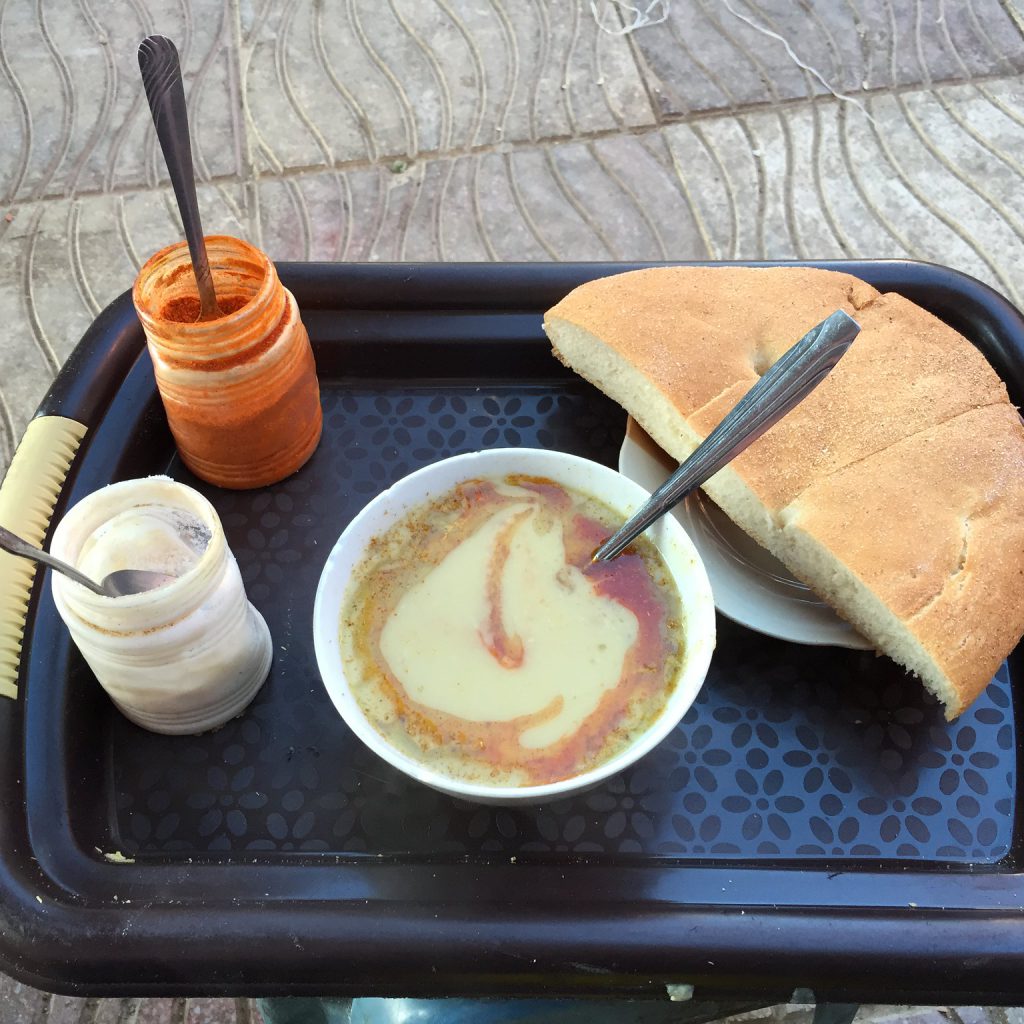
by momo go
Soup has an important place in Moroccan cuisine, and b’ssara, a breakfast classic in Morocco, is a soup made with dried fava beans that are pureed with garlic, olive oil, and Moroccan spices.
In the early hours of the morning, you can see b’ssara in everyone’s hands at the bazaars and in the streets. Decorated with olive oil and parsley, this soup is full of protein and makes for a great kick start to the day.
Kefta Tagine
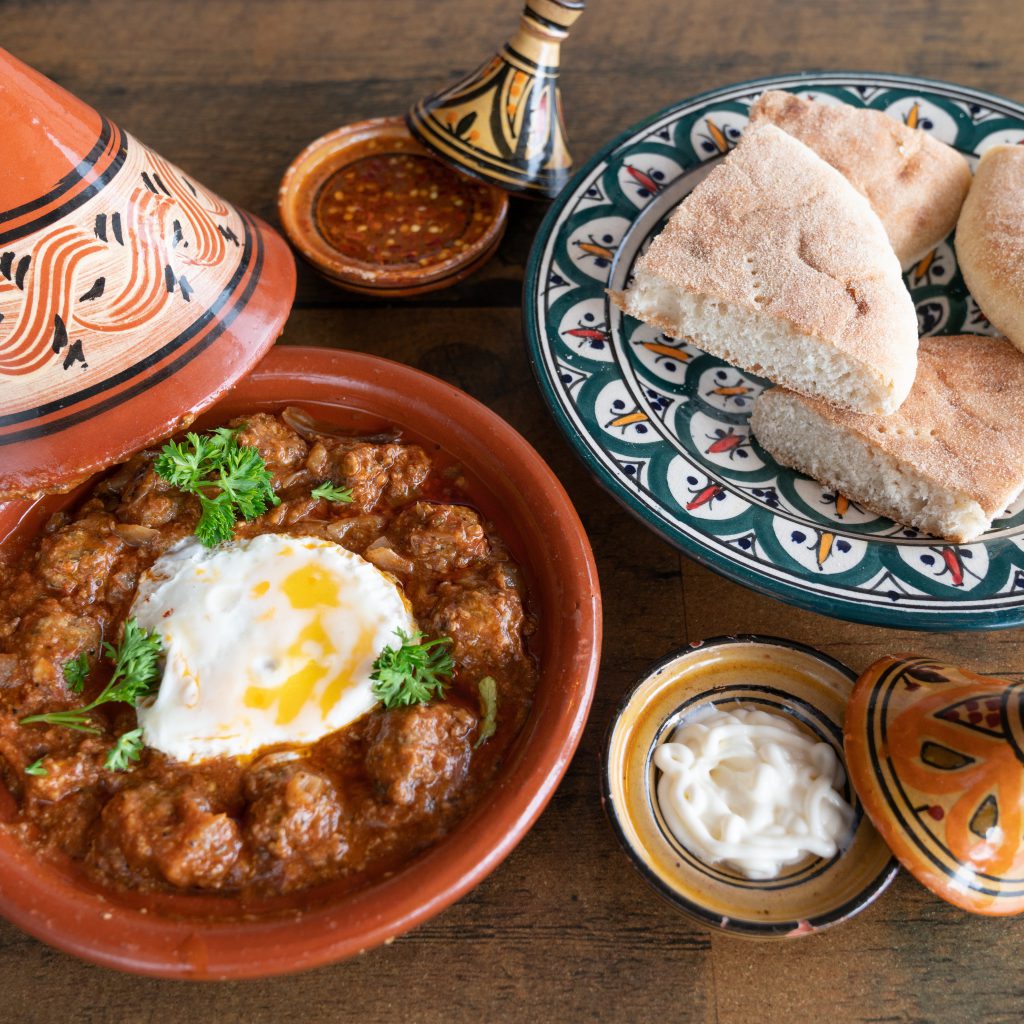
Another full-on protein source, kefta tagine is made of meatballs and eggs. Meatballs from ground beef or lamb form the basis of this dish. Coriander, parsley, and garlic are mixed with minced meat and are formed into small balls. The meatballs are cooked in a tomato and onion sauce. Once the meatballs are cooked, the chef cracks eggs over them before taking them off the stove.
Zaalouk
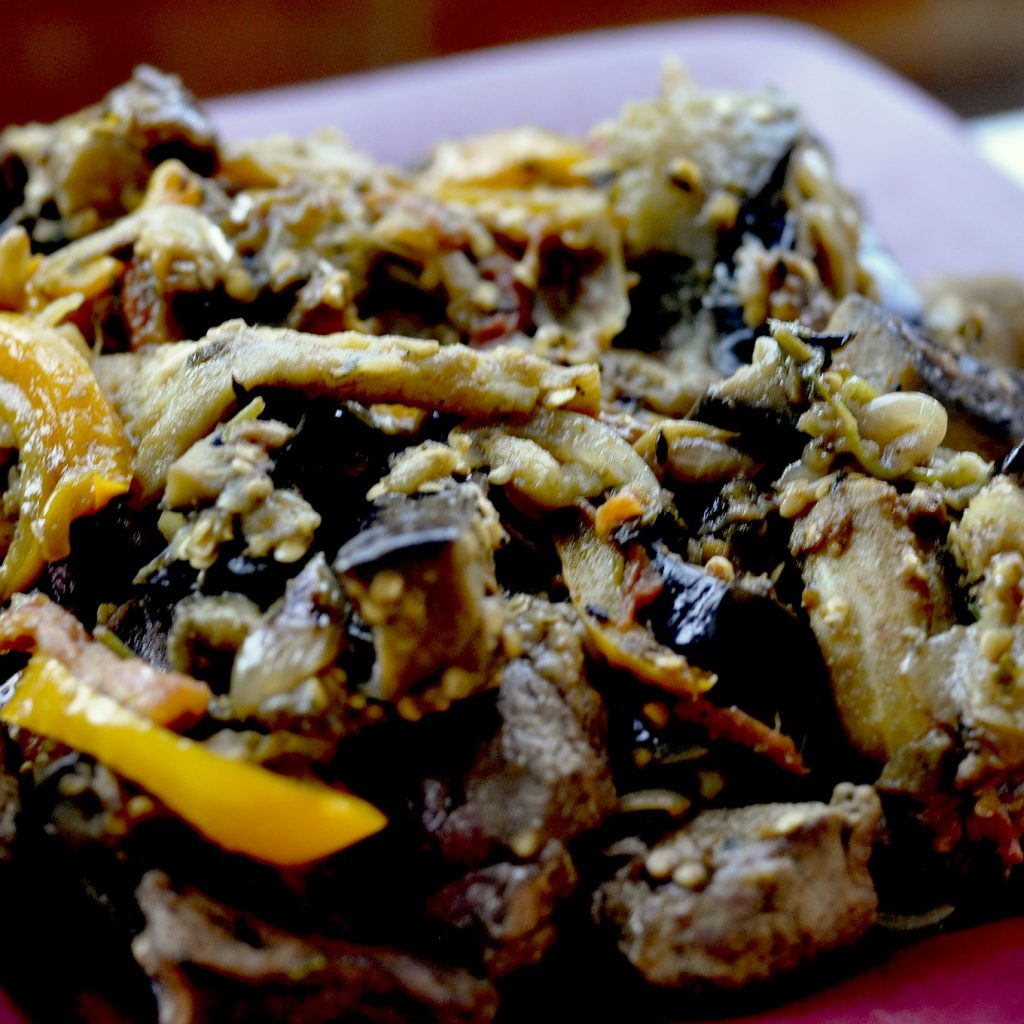
by MJ Harris
Zaalouk is one of the most common appetizers on Moroccan dinner tables. It can be served hot or cold, and it’s great with simple bread. But it’s also served as a side dish to meat, chicken, and fish.
Consisting of eggplant paste, red pepper, cumin, tomatoes, and parsley, zaalouk is full of bold flavors. Eggplants cooked on the grill are served mixed with grated tomatoes, olive oil, spices, and garlic. If you like eggplant dishes, such as baba ganoush or moutabel, you’ll definitely love Moroccan zaalouk. Just don’t fill yourself before the main course arrives.
B’stilla
The pastries of Moroccan cuisine are just as good as their main dishes. B’stilla is a round-shaped pastry made from a dough called warkha. Warkha is a sweet-salty mixed pastry thinly rolled by hand. B’stilla contains almonds, grapes, saffron, eggs, and cinnamon and can be prepared with pigeon, seagull, or chicken meat. It’s a staple holiday dish served with sprinkled granulated sugar on top.
Briouat
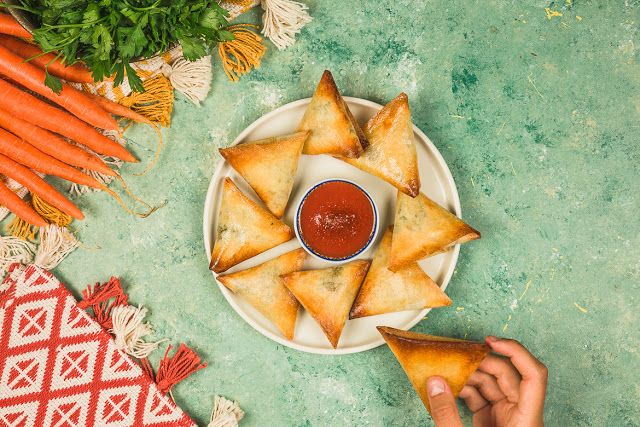
by idee repas
Briouat is a triangular pastry that can be sweet or savory. We can say that it looks (and tastes) like a dumpling, but it’s deep-fried instead of steamed or boiled. The dough is stuffed with various fillings, such as chicken, lamb, beef, cheese, lemon, and pepper. The sweet ones are dipped in peanut butter or almond butter, and the savory ones can be dipped in saffron, ginger, or cinnamon and deep-fried until crispy brown.
To learn more about Moroccan pastries, you can take a look at this Moroccan pastry cooking class with a souk tour.
Berber Crepes
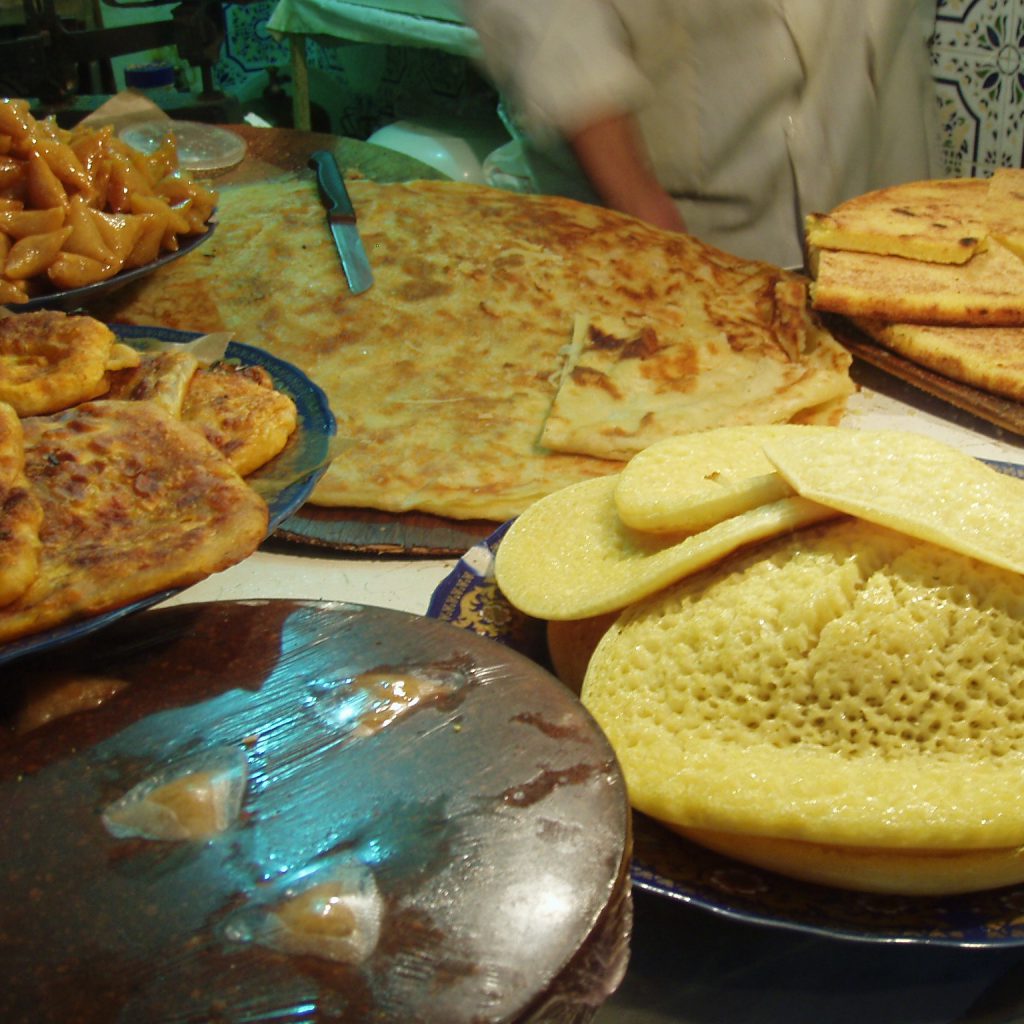
by diga diga
Berber crepes are a nomad tradition and one of the most delicious dishes in Moroccan cuisine. All Berber families make crepes for the holidays, which look like a big round loaf stuffed with chopped vegetables and thick meat. The crepe is crispy on the outside and soft and rich on the inside. And when you cut it open, you’ll see the filling bursting out.
Traditionally, a Berber crepe is made with a few staple ingredients, usually baked in the sand or a fire pit — a tandoor. It has long been an important staple dish for many families living on the edge of the nearby dunes. The dough is simply made of flour, yeast, salt, and olive oil. The stuffing is made of beef, eggs, nuts, onion, garlic, cumin, chili powder, turmeric, and other spices.
Due to the limited resources of the Sahara Deserts, people used to dig a hole in the sand and then heat some stones on the base by lighting a fire. The crepe is put directly over the hot stones, forming a charred crust. It’s a cross between pancakes and crepes, and it’s absolutely delicious.
Snail Soup
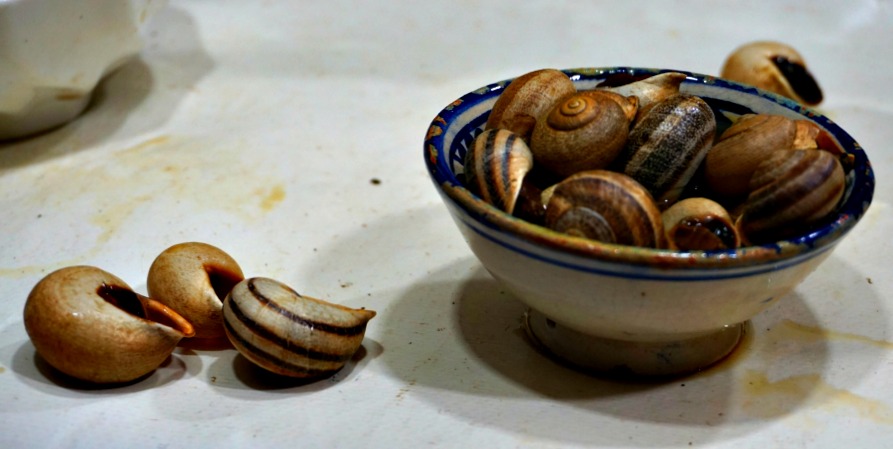
by Sean Boyle
Most people immediately associate snails with French cuisine, and they aren’t wrong. As a French colony, Morocco has adopted some of its snail soup recipes and added its own local twist. Moroccan snail soup is boiled in a large pot, with more than a dozen seasonings, until the snails are fully immersed in all the flavors.
Also, you don’t need to go to high-end restaurants to taste snail dishes when in Fez. You can even find them served at food stalls on the streets, especially in the city square.
Goat Milk Cheese: Jben

by Wassi Hadd
The rounded traditional cheese Jben is a symbol of Chefchaouen, a city in northwest Morocco. Its fame has spread around the country, and you can definitely find some nice Jben in Fez. It’s made from fresh goat’s milk, sometimes mixed with cow’s dairy products. Moroccans like to have this cheese with bread for breakfast.
Chebakia
It’s possible to see the traces of Arabian and Middle Eastern cuisine in both the desserts and the basic dishes of Moroccan cuisine. Chebakia is one such well-known inexpensive dessert you’ll find everywhere. It’s served in patisseries, on the streets, and in coffee shops.
Chebakia, widely consumed during Ramadan, is made by frying a mixture of wheat flour, orange flower water, egg, and almonds, later dipped in sesame and honey. With its unique shape, Chebakia is one of the most elegant and delicious desserts you can find in Morocco.
Cornes de Gazelle
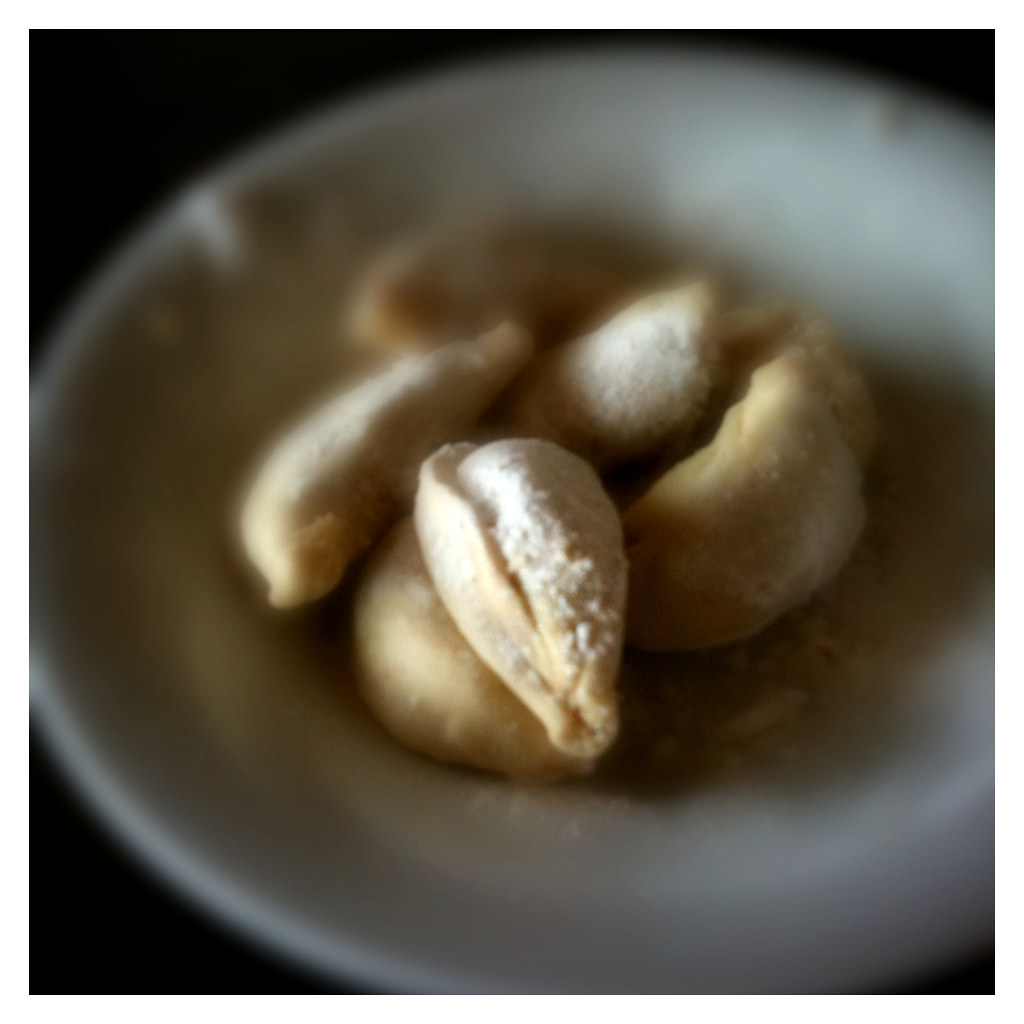
by zawyat
As in most Arab countries, almonds, walnuts, peanuts, and dates are very popular in Morocco and are used as the main ingredients in Moroccan desserts. Cornes De Gazelle means “gazelle horn”, referring to the crescent shape of the tasty treat. It’s a cookie-like dessert prepared with orange blossom water, almond paste, and a filling made with cinnamon. It’s very popular in Morocco, but it’s also very famous outside of its origin country and has an unforgettable flavor for almond dessert lovers.
Mint Tea
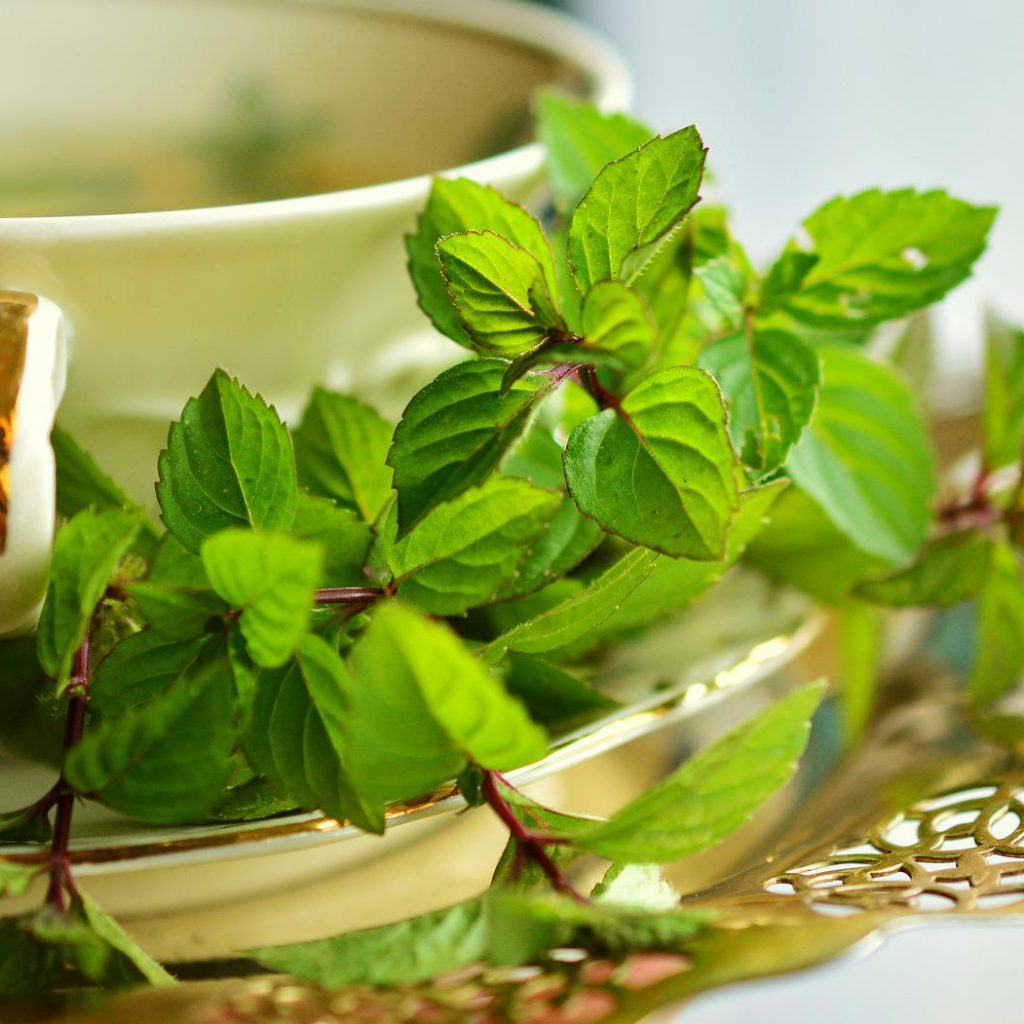
Mint tea, also known as Moroccan whiskey, is a staple of the Moroccan tea tradition. A few sprigs of fresh mint leaves are added to hot water and infused for 4-5 minutes. The tea is then served in special silver-plated glasses.
The tea is poured into the glasses from high to ventilate the tea and create foam on it. Moroccans drink mint tea with a lot of sugar. If you aren’t ready for a sweet mint tea, don’t forget to ask for less or no sugar.
This treat, which has become one of the symbols of Moroccan cuisine, is served with a pleasant ceremony before and after the meal, in homes and restaurants.
Over and Out!
Moroccan cuisine – known for its strong-flavored spices, fresh seafood, delicious dates ripened in the heat of Africa, and dishes cooked in casseroles with thousands of vegetables – won’t fail to mesmerize you.
The local cuisine is closely tied to the local traditions. One thing you’ll notice when you visit this North African country is that the people are very faithful to their beliefs and customs, which is reflected in their daily life activities, including cooking.


